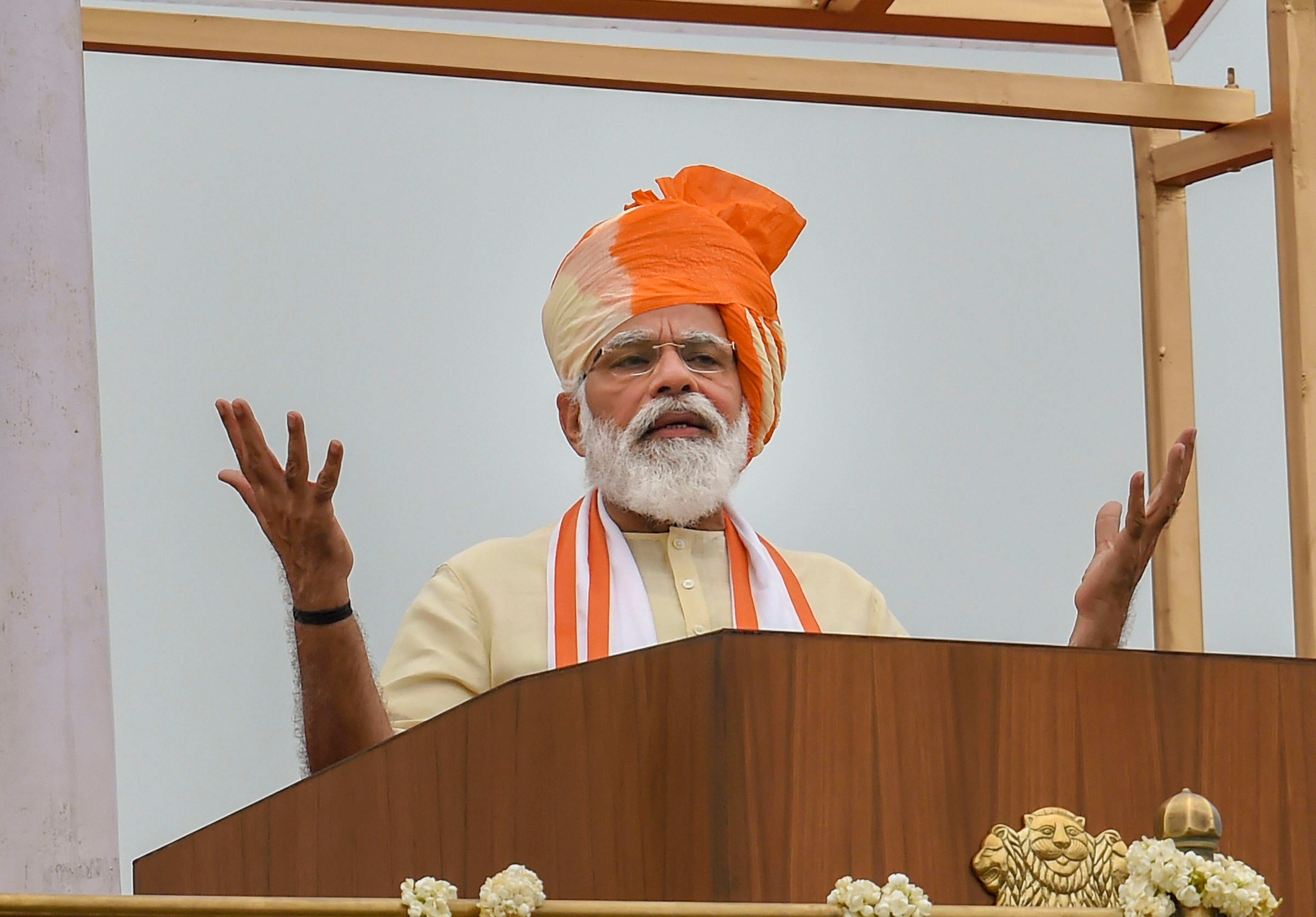Modi`s call for Atmanirbhar Bharat as Foundation of Strong & Developed India |
 On the 79th Independence Day, Indian Prime Minister Narendra Modi underscored Atmanirbhar Bharat as one of the key foundational planks for Viksit Bharat, citing India`s advances in defence, technology, energy, space, and manufacturing. Highlighting Operation Sindoor, he said strategic autonomy and indigenous capabilities are key to decisively tackling threats, making self-reliance the bedrock of national strength, dignity, and the journey to a developed India by 2047.
On the 79th Independence Day, Indian Prime Minister Narendra Modi underscored Atmanirbhar Bharat as one of the key foundational planks for Viksit Bharat, citing India`s advances in defence, technology, energy, space, and manufacturing. Highlighting Operation Sindoor, he said strategic autonomy and indigenous capabilities are key to decisively tackling threats, making self-reliance the bedrock of national strength, dignity, and the journey to a developed India by 2047.
PM Modi`s Key Highlights
• Defence Self-Reliance and Operation Sindoor: Hailed Operation Sindoor as a demonstration of India`s defence self-reliance. Indigenous capabilities, including Made-in-India weapons, enable India to act decisively and independently, proving that national security cannot rely on foreign dependence.
• Self-Reliance in Jet Engine: Urged Indian innovators and youth to develop jet engines within India, ensuring that future defence technology is entirely home-grown and self-reliant.
• Semiconductors and High-Tech Leadership: India will launch Made in India semiconductor chips by the end of 2025, reflecting the nation`s growing strength in critical technology sectors. He emphasized innovation in AI, cyber security, deep-tech, and operating systems for global competitiveness.
• Space Sector Independence: Celebrating the remarkable achievements of Group Captain Shubhanshu Shukla, announced ambitious plans for India`s very own space station, signalling a new era of indigenous space capabilities.
Over 300 startups are actively innovating in satellites, exploration, and cutting-edge space technologies, ensuring that India is not just participating but leading globally in space science and exploration
• Clean and Renewable Energy: Stressed the importance of energy independence, saying that for the bright future of youth and for welfare of farmers and that this will be done.
The world debates global warming, but India had resolved to achieve 50% clean energy by 2030 yet, thanks to the commitment of its people, that goal was met by 2025.
Solar, nuclear, hydro, and hydrogen energy have been advanced, marking a decisive step towards energy independence.10 new nuclear reactors are currently operational and emphasized that by India`s 100th year of independence, the nation aims to increase its nuclear energy capacity tenfold, strengthening energy self-reliance and supporting sustainable growth.
• National Critical Minerals Mission: Secure resources essential for energy, industry, and defence, India has launched the National Critical Minerals Mission, exploring 1,200 sites. Controlling these minerals strengthens strategic autonomy, ensuring India`s industrial and defence sectors remain self-reliant.
• National Deepwater Exploration Mission: India will harness its deepwater energy resources, strengthening energy self-reliance and reducing dependence on foreign fuel imports.
• Agricultural Self-Reliance and Fertilisers: Urgent need to produce fertilisers domestically to empower farmers and protect national food security. Reducing import dependence ensures the nation`s agricultural sector thrives independently, safeguarding farmers` welfare and strengthening India`s economic sovereignty.
• Digital Sovereignty and Indigenous Platforms: Called to youth to develop India`s own social media platforms and digital infrastructure, ensuring communication, data, and technological ecosystems remain secure and independent, reinforcing India`s digital autonomy.
• Self-Reliance in Medicines and Innovation: India`s strength as the “pharmacy of the world” with the urgent need to invest more in research and development to provide the best and most affordable medicines for the welfare of humanity. Researchers and entrepreneurs to secure patents for new drugs and medical technologies, ensuring that India not only meets its own healthcare needs but also contributes to global well-being, establishing itself as a hub of medical self-reliance and innovation.
• Championing Swadeshi: Citizens and shopkeepers to champion India-made goods under the “Vocal for Local” initiative, and Swadeshi should stem from pride and strength, not compulsion. Visible promotion, such as “Swadeshi” boards outside shops, to boost self-reliance, support entrepreneurship, and strengthen India`s economic and industrial base.
• Reform Task Force for a $10 Trillion Bharat: Creation of a dedicated Reform Task Force to drive next-generation reforms with the mandate: accelerate economic growth, cut red tape, modernise governance, and prepare Bharat for the demands of a $10 trillion economy by 2047.
• High-Powered Demography Mission: To meet the dangers of demographic imbalance due to infiltration and illegal migration in border areas, a High-Powered Demography Mission will address the national security challenge, ensuring the unity, integrity, and rights of India`s citizens are safeguarded.
• Simplifying Laws and Compliance: Over the past years, the government has undertaken a historic wave of reforms, abolishing over 40,000 unnecessary compliances and repealing more than 1,500 outdated laws. Dozens of other laws were simplified in Parliament, always keeping citizens` interests at the forefront. In the recent session alone, over 280 provisions were removed, making governance simpler and more accessible for every Indian.
|
|
|
|
|



